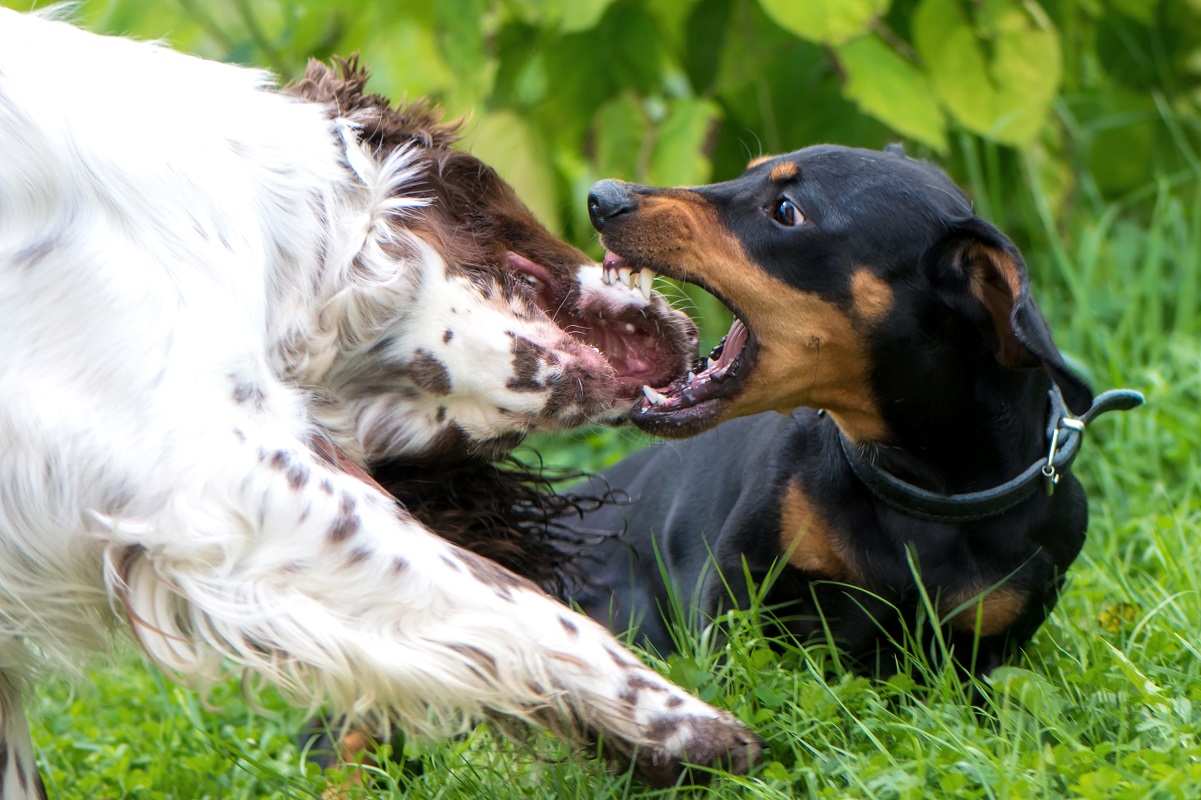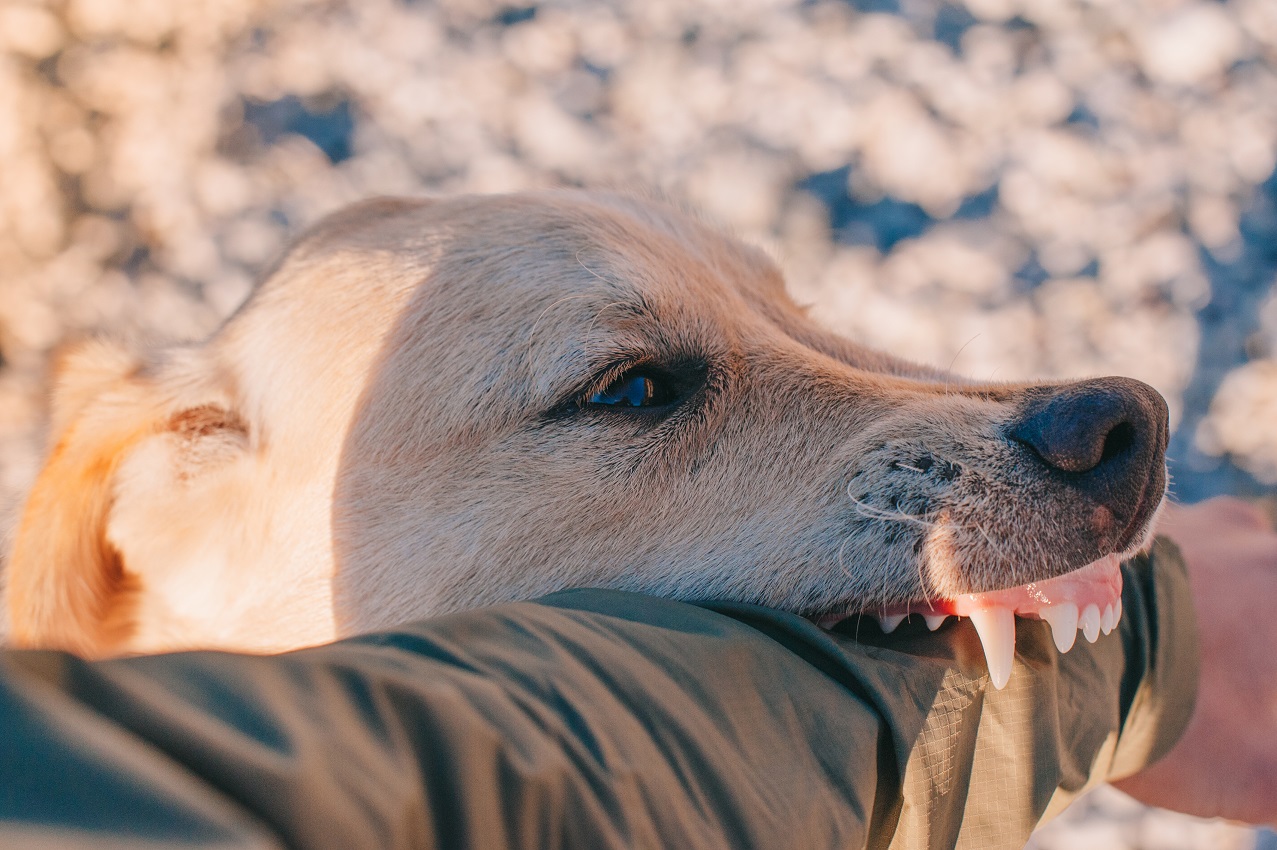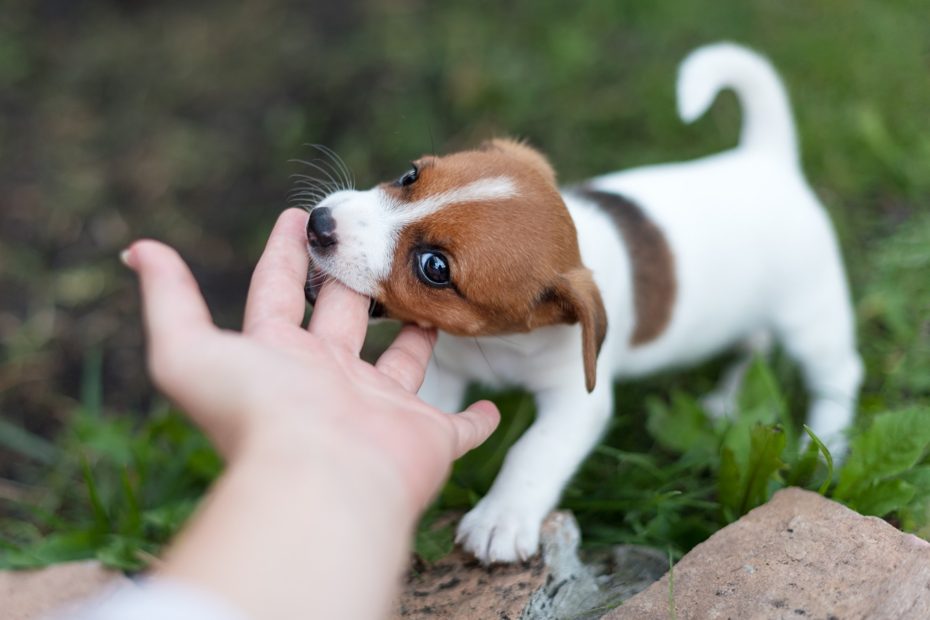Most of the time, dogs are lovable pets. But occasionally (and unfortunately) I’ll get a panicked email from a client saying something along the lines of “my dog bit my child”
Now as parents, it’s always in our best interest to keep our kids safe at all times. And I speak from personal experience of how hard this can be, especially with toddlers around.
But here’s a shocking fact…
Did you know that about 72 percent of dog bites happen within the owners’ homes. And while it can happen to any member of the family, children are the major victims.
Now, according to a study conducted to determine biting motivation, children older than 7 years were bitten due to territorial guarding. While the younger ones of below 6 years were due to resource guarding.
But whether the bite is territorial or resource guarding, a dog will always bite as a form of defense and canine communication. So as the owner you should always make the extra effort to know your dog’s stressors and make every attempt to reduce them.
So what do you do when a dog bites?
Well, parents who find themselves in this situation immediately get all shocked and confused as to why it happened. And with so many questions running through their minds, some will be inclined to send the dog to a new home, give it away to a new owner, and euthanize others.
But before you consider the extreme, let’s take a look at what you can do to address the situation effectively before making any rash decisions…
(video will open in new window)
What To Do First If Your Dog Bites Your Child
When a dog bites, the first thing to do is to assess the bite. Is there blood? How big or deep is the wound? Does it require emergency services? Noting this information will help determine your next action.
For first aid
Conduct the first aid regardless of the severity of the wound, as it is not advisable to move with the wound while it is still bleeding.
- Start by placing a towel over the injury to stop bleeding.
- Elevate the injured area to reduce blood flow.
- Then wash off the wound with soap and water.
- And apply a bandage to the injury.
- Add antibiotics for bacteria prevention.
If it is a serious case, a deep severe bite, take it to the hospital for further expert assessment. For a small wound, then you can still take it to the doctors for assessment or manage it at home by cleaning and applying antibiotic ointment every day.
Why Did My Dog Bite My Child

So why do dogs bite?
According to veterinary experts, a dog’s main reason to bite is being provoked, behavioral problems, threat, and protection.
Biting is a natural occurrence by dogs, while we humans regard it as aggression; for dogs, it is perfectly fine. For them, if it’s what it takes to minimize their stressor. A dog can bite and immediately feel relieved since the threat /stressor is gone.
Fear, anxiety, pain inflicted on a dog can cause it to be aggressive. These are forms of provocation and stressors. A dog’s only defense mechanism is to turn aggressive and bite or retreat.
Depending on the breed, some have a low bite threshold, while others have a high bite threshold.
Means that it takes a lot of stressors for a high bite threshold dog to bite, and these are the best variant to have in your home if you have kids around. Unlike the low bite threshold, a slight stressor, and it turns wild.
Unintentional Provocation
As a toddler is growing; they tend to learn through exploring.
You can find a toddler poking your eyes or ears to see what happens. A dog in your home could be subject to the same, but it becomes different as dogs do not see it that way.
In some instances, your baby may try to eat the dog food. These acts may be provocative and push the dog to bite.
It is believed dogs do sense good people, so if you enter into a room and it takes an intense dislike to you or someone in the room, it may not like you as much. A slight distraction can end with a bite.
Intentional Provocation
On the flip side, intentional provocation majorly occurs when one interferes with its territory and resources.
Dogs are territorial by nature; they know what belongs to them, their owner, and their food.
Trespassing a dog’s territory may cause it to bite out of fear, intrusion into its space more so a mother with pups may feel threatened.
And taking away its meal may also offend it as it will assume you are taking possession of its resource.
All these, from a dog’s point of view, are stressors that cause it to bite.
A professional veterinarian will always advise parents and pet owners to keep kids away when the dog is eating or sleeping. And generally supervise their kids when in the same environment with dogs.

Behavioral Problems
The worst kind of reason why a dog will bite and a real problem, yet most pet owners never agree to it.
They are too emotionally attached to notice if the dog is misbehaving or threatening others.
They always either ignore or name it as a one-time thing.
Comments like ‘he is usually a good dog,’ or ‘he won’t do it again’ after a bite are tell-tale signs that a pet owner is unaware of the problem at hand.
A professional veterinary behavior expert is always the best person to assess the dog. They subject your dog tests and make a diagnosis of signs of aggression or behavioral problems.
If your dog exerts signs such as curling its lips, pinning ears, trying to bite, or redirecting anger. This is most likely a behavioral problem and makes the dog a danger to you and others.
When it comes to a diagnosis, expert analysis can be tough as they may send you steps to take to handle the issue or bluntly disregard the pet as untrustworthy.
While pet owners may not always agree with an expert’s diagnosis or recommendations on their dogs. Failure to address the behavioral issue may subject the owner to litigious action if your pet bites someone else.
Protecting Their Owners
With territory comes protection. Dogs can sense a bad situation and may jump into action to protect its owner if an external force threatens them.
A man’s best friend may resort to biting if someone interferes with you or with them.
Classification of dog bites
Bites do differ in severity, and so are classified in levels.
- Level 1 is the snap. It doesn’t bite, but it is a warning to you. When this happens, try and identify its stressor and desensitize him immediately before the next stage.
- Level 2 is an actual contact to the skin without puncturing. This is also a warning that he is serious and that he can bite.
- Level 3, he bites, but the bite marks are shallow about 3 to four holes. May bleed but not severely
- Level 4 is a serious deep puncture. This means it bit and held on.
- Level 5 bites are multiple attacks and could be anywhere in your body.
- Level 6 is the worst-case scenario when it attacked, killed, and maybe consumed the flesh.

The Emotional Trauma Of A Dog Bit On Your Child
When a dog bites your child, blame can be automatically placed on the individual or caregiver present when it happened.
If not addressed in time, this psychological trauma can cause strain to relationships and even break families.
It gets worse for the victim if they lose a part of them, either an eye, a limb, or facial scarring or loss of function due to the bite.
After a bite incident, the victim will be terrified for a while, undergoing emotional trauma. It is recommended to see the right physician to handle the psychological issue before it gets out of hand.
If you intend to keep your beloved furry friend, you may want to;
1. Implement a behavioral modification program
Hiring a trainer or an experienced dog behavior professional could be costly but a necessary step.
While an expert may identify your dog stressors and create desensitizing programs. It could be pretty hard trying to convince or change a dog’s view of his stressors.
It will take time and effort. Cooperation and coordination between you and the dog and trainer will help significantly to try reprogramming your dog.
While in training, stiff actions may need to be taken. Restrictive measures like crating or keeping them locked in a kennel when visitors are in the home are among the things you may need to do.
As an owner, you will intentionally disrupt his daily routine, no walks to the parks, no car rides, and minimal social interaction. Your dog may need to notice the changes for the training to take effect.
2. Give away or re-home
This option is viable to a new homeowner who knows the dog’s history and is willing to apply for the behavioral change program.
While the chances are minimal and most probably the new owner is not as well equipped in handling the dog as you will, it still can work.
If not sending him to another home, you may send him to government training programs or rescue teams with training guarantees and not euthanizing.
3. Euthanasia
This is always the last and the most dreaded option for dog owners; they love their pets and their kids more.
If your dog suffers from behavioral problems, it may be the best option, not a pleasant one but necessary.
You don’t want to risk your dog biting again or if it is past the stage of help.
An owner may resort to having the dog euthanized if they can’t get a new home for it. And isn’t willing to subject it to a new restricted miserable life that he won’t get to enjoy the activities he was used to.
There could be too many uncertainties. After a bite, family perception and treatment may have changed, and there are no guarantees of successful modification of behavior.
Prevention
Majorly preventing another dog bite incident is no guarantee.
Behavioral training comes in handy. Supervising kids around your dog and creating boundaries on how far into your home the dog can have access will reduce the risk.
Teach your kids what to do around dogs and let them know all the safety precautions to take.
In Conclusion
Since we don’t need or intend to break the relationship between dogs and us-human friends, your pet will most obviously need a behavioral change after a bite incident.
Take it positively and implement all the recommendations offered.
(video will open in a new window)

